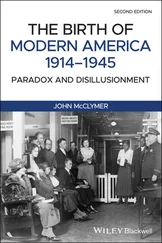Interpersonal Diagnosis was the high point of Leary’s psychology career. But despite his success, his dissatisfaction with his profession was slowly becoming visible. For years his research team had been keeping score of the success rate of psychology. The results were sobering. No matter what types of psychotherapy were being used, a third of patients would get better, a third would stay the same, and a third would get worse. Control groups, where the patients did not receive treatment, showed exactly the same scores. It was impossible to avoid the conclusion that the profession he studied simply didn’t work.
Tim’s personal life flowered during this period. He met Marianne Busch during the diagnosis of his hearing problem in the army and fell in love at first sight. She was intelligent, musical, sophisticated and very sexy, and they were married on 12 April 1944. Once in California, they bought a $40000 house in the Berkeley Hills, at 1230 Queen’s Drive, with a terrific view of San Francisco across the Bay. Their first child, Susan, was born three years later, and their son Jack followed two years afterwards.
Their social life revolved around parties with other professional and academic couples. These were flirtatious, alcohol-fuelled affairs, but they always remained on the right side of respectable. No one really misbehaved, or at least not publicly. Like everyone else, the Learys drank heavily and, despite Tim’s father’s alcoholism, they thought nothing of it. Jugs of martinis were thought to be sophisticated, and those who didn’t drink were considered prudes. Cracks had started to appear in the marriage after the children were born, but alcohol helped to mask them, so they stayed, in true 1950s’ style, hidden and ignored.
In 1953, after months of friendship and flirting, Tim realised that he was in love with his project manager, Mary della-Cioppa, more commonly known as Delsey They started an affair that lasted two years, meeting three or four times a week in a small apartment that Tim rented in Telegraph Avenue. The affair became common knowledge, but although Marianne knew, it was never mentioned. Her drinking increased. She started seeing a psychiatrist.
No one realised how badly Marianne was suffering. She kept up the proper, respectable 1950s’ façade when she could have complained and argued and screamed. She could have escaped through separation or divorce. She could have taken the children and moved back in with her parents. Instead, she got out of bed on the night of 21 October 1955, taking care not wake Tim, and went downstairs to the garage. She closed the heavy redwood garage door, which was always left open because it had swollen in the damp weather. She got in the car and she started the engine.
When Tim woke the next morning, it was his thirty-fifth birthday. He was hung over. He searched the house, looking for his wife. His cries of ‘Marianne!’ woke the children, and they were following him when he went outdoors. The sound of the engine idling could be heard from within the garage. He wrenched the redwood door open and inhaled the sudden rush of exhaust fumes. Marianne’s body was in the front seat.
The note she left was brief. ‘My Darling,’ it said, ‘I cannot live without your love. I have loved life but have lived through you. The children will grow up wondering about their mother. I love them so much and please tell them that. Please be good to them. They are so dear.’ 12
It’s impossible to say how anyone, whether spouse or child, can recover from an event like this. The Learys found their own ways to cope. Tim dealt with the situation by turning to Delsey for support, and after the funeral they were married. They honeymooned in Mexico with the children, a vacation that Jack Leary would later describe as ‘short and unpleasant’. After returning to California, Tim felt the need to get right away. He took a leave of absence from his job, rented out the house and dragged the family off to Spain. The voyage was miserable and Tim and Delsey separated shortly after they arrived.
This self-imposed European exile would be a period of transition for Tim, and the end of his previous life would prove to be painful. The children were having a horrible time being dragged between various European schools. He had lost his faith in his profession. Marianne’s death hung over him, and he now had two failed marriages to add to his failures at Classical High, Holy Cross, West Point and the University of Alabama. He caught the clap from a Spanish prostitute during the Christmas of 1957. His money supply started to dwindle.
Tim rented an Olivetti typewriter and began work on a manuscript that outlined the changes he felt his profession needed to make in order to achieve results. It was called The Existential Transaction. In it he argued that psychologists shouldn’t stay inside clinics, but needed to venture out into the real world and see patients in real-life situations, as the act of going inside a hospital and seeing a doctor changes the patient’s psyche. He also argued that the psychologist himself should not try to be a neutral observer. He had to become involved with the patient, and be prepared to be changed by the process as much as, or even more than, the patient. This was a radical stance to take in the field of psychology. It recalls the paradigm shift in physics caused by Heisenberg’s Uncertainty Principle, which stated that the act of observing an event changes the event. This was the ‘transaction’ of the book’s title: the idea that something had to pass between doctor and patient if there were to be any change in the patient’s condition.
In January 1959 Tim became ill. He was staying in an apartment that had been tunnelled out of the rock in Calle San Miguel, in the south of Spain, where water ran down the bare rock walls and the beds were always damp. His scalp began to burn and his face began to swell. Water blisters formed on his cheeks. ‘Tim’s head was almost double in size,’ his son recalled later, ‘completely swollen up, incredible! He couldn’t see; his eyes were completely shut!’ 13 The Spanish doctors were unable to diagnose exactly what was wrong with him, for they had never seen anything like it before. The swelling and blisters began to spread to his body. Jack and Susan were sent to stay with a nearby American family, and Tim checked into a warm hotel. The mysterious disease spread to his hands and feet. He could barely walk and began to smell of decay.
The hotel did not permit guests to have pets, so he had had to smuggle Jack’s puppy into his room. The dog was also sick, and soon left a river of slimy yellow diarrhoea across the floor. Tim knew that he would be evicted from the hotel if the maid saw it, so he crawled to the bathroom, collected the toilet paper and set about mopping up the mess. It took him the best part of an hour. Then he discovered that the toilet had broken, and he couldn’t flush the evidence away.
The window overlooked the yard at the back of the hotel, so he crawled over to it and threw the paper out. It landed on electrical cables below, fluttering like flags for all to see. The only way to reach it was to head out across the hallway, down the stairs and out into the back yard. Every step was agony. He used his umbrella as a cane but fell more than once. Somehow he climbed on top of a packing crate, where he frantically waved the umbrella, desperately trying to reach the paper that dripped above his head.
When he finally made it back to his room, hours later, he collapsed into his chair. The pain was great and he had no intention of ever moving again. As the hours passed and the day turned to night, Tim basically just gave up. As he would later write, ‘I died. I let go. I surrendered. I slowly let every tie to my old life slip away. My career, my ambitions, my home. My identity. The guilts. The wants. With a sudden snap, all the ropes of my social life were gone.’ 14 And then there came an incredible feeling of liberation.
Читать дальше












